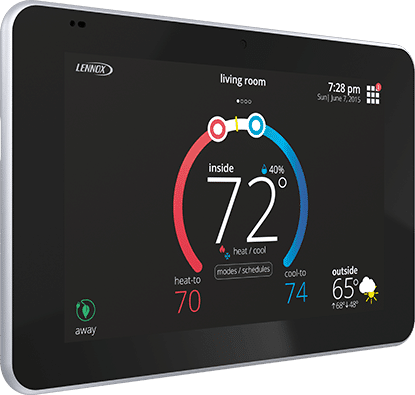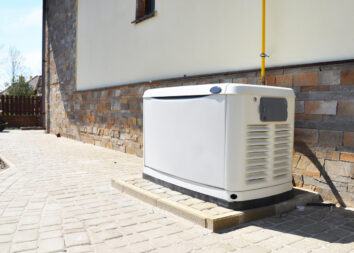
5 Troubleshooting Tips
When your thermostat fails to respond as it should or displays a blank screen, it can be downright frustrating. More than that, it can lead to serious discomfort for you and your family.
The HVAC experts at Harris Plumbing, Heating, Air, & Electric explain the most common reasons why your thermostat may not be responding properly and how to troubleshoot the issue before contacting a professional for repairs.
Check Your Batteries
If you’ve noticed that you have a blank thermostat or it stopped responding, you should first check your batteries. In some cases, an unresponsive thermostat can be attributed to a set of dead batteries that need to be replaced. After replacing your batteries, check that your thermostat turns back on and functions properly. Most modern thermostats will display a low battery symbol when the batteries reach their usable lifespan.
Check Air Filters
Sometimes, the issue isn’t with your thermostat at all but rather with your HVAC equipment. When the air filters in your heating or air conditioning system become clogged, your thermostat may shut down to prevent overheating. If your thermostat display is on but not responding to your temperature change requests, check your air filters to see if they need to be replaced. Once your air filters are cleaned or replaced, see if your thermostat returns to business as usual. Be sure to replace your air filters regularly, usually once every 90 days.
Check the Breaker
Most of the time, your thermostat is connected to your home’s electrical panel. In some cases, the thermostat or another connected device may cause your circuit breaker to trip, shutting power to your thermostat. If your thermostat becomes unresponsive, check your circuit breaker to see if it’s been tripped and flip the switch back to reset the circuit if it has. Afterward, check the screen to see if your thermostat functionality has been restored.
Check Safety Switch
HVAC systems are equipped with built-in safety switches that activate in case of unsafe operation. In air conditioners especially, safety switches help detect excess moisture or overheating, prompting your entire system — including your thermostat — to shut down before damage occurs.
Check the safety switch in your AC’s drain pan to see if the sensor has gone off as soon as you notice your thermostat has stopped working. If the sensor has been triggered, contact an HVAC technician for same-day air conditioner repair to have your system thoroughly inspected and restored. For furnace failures, call a professional for diagnosis and repair.
Call a Professional
While some thermostat failures can be easily resolved on your own without needing professional repair services, other issues are more complex and demand the skill and attention that only a trained technician can provide. If you’ve attempted to troubleshoot your thermostat using the tips above and are still experiencing issues, turn to the team at Harris Plumbing, Heating, Air, & Electric for the prompt, professional solutions you seek.
With same-day emergency service availability and satisfaction guaranteed, our team goes above and beyond to get your HVAC issues resolved as quickly and efficiently as possible. We have proudly delivered the five-star service experience that families throughout NJ, PA, and DE have trusted for over 30 years.
Get thermostat repair or replacement services today by calling our team at 856-935-8888.



